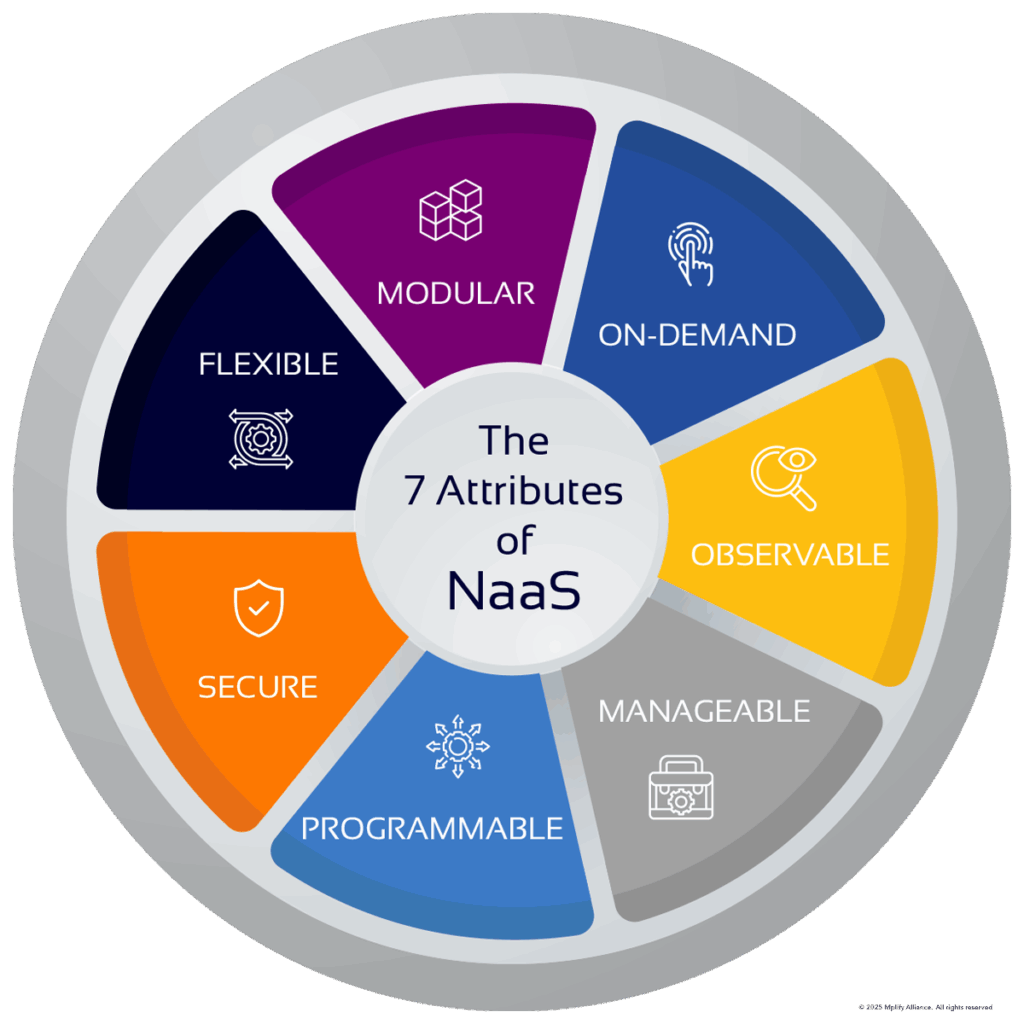
on Posted on Reading Time: 3 minutes
The way companies use networks is changing fast. Businesses want networks that are flexible, easy to scale, secure, and work the way cloud services do. According to Analysys Mason, enterprise spending on Network-as-a-Service (NaaS) is expected to grow 40% every year through 2029 reaching almost $11 billion. That’s a clear sign that enterprises are embracing NaaS, and service providers are moving fast to meet the demand.
To align industry understanding of what NaaS should look like, MEF recently published its NaaS Customer Experience White Paper. Created with input from MEF’s global member community, this guide outlines what enterprises should expect from a NaaS platform and what providers need to deliver to stay competitive in this evolving space.
What Enterprises Want from Their Networks
Enterprises today don’t have time for long provisioning cycles and fixed, one-size-fits-all contracts. They need networks that can be spun up fast, adapt on the fly, and work well with their growing mix of cloud services, edge locations, and AI-powered apps. Enterprises want networking to work like the cloud with flexible billing, real-time controls, and easy integration into their existing systems using APIs.
What Makes a Great NaaS Experience?
Within the NaaS Customer Experience white paper, MEF identifies seven key attributes that define a solid NaaS offering:
- On Demand: Services can be turned on or off instantly, anytime.
- Observable: Real-time visibility into what’s happening including usage, performance, SLAs, and alerts.
- Manageable: Easy tools to tweak services, fix issues, and update contracts without calling support.
- Programmable: Open APIs that let you integrate the network into your systems or workflows.
- Secure: Built-in security and compliance features that protect data and users.
- Flexible: No rigid contracts, instead pay as you go or mix and match billing models.
- Modular: Pick and choose exactly what you need for connectivity, SD-WAN, SASE, cloud routing.

These attributes combine to create a user-focused experience that gives businesses more control, more agility, and fewer headaches.
Build-Your-Own Networking, Powered by APIs
One of the biggest shifts in NaaS is the move toward modularity. Enterprises are no longer locked into bundled services they don’t need. Instead, they can combine underlay services like Ethernet or broadband with overlays like SD-WAN, SASE, and cloud interconnects. With MEF’s Lifecycle Service Orchestration (LSO) standards enabling APIs and automation, these components easily integrate to deliver fast, seamless, and scalable connectivity.
For example, a company looking to establish secure, high-speed connectivity between a data center and a cloud provider can do so with NaaS, while also applying security policies and monitoring performance through a dashboard or API.
Providers Are Evolving, Too
As demand for NaaS grows, service providers are rethinking how they operate. They’re moving from old-school, manual processes to fully automated platforms, integrating network and security functions, leaning into AI for smarter service assurance, and giving customers more digital control.
But delivering the full promise of NaaS takes more than individual transformation. It requires a connected, automated ecosystem. This ecosystem extends beyond traditional service providers to include a diverse range of partners working together to deliver flexible, real-time services and a seamless end-to-end user experience. Effective collaboration not only creates more value for enterprises, especially those running cloud-based applications across hybrid environments, but also expands reach and choice. The broader and more interconnected the ecosystem, the more attractive it becomes for partners and customers alike.
The Bottom Line
Service providers and enterprises are aligning around a shared vision for cloud-like network services. MEF’s white paper helps establish a common starting point—defining expectations and requirements to accelerate NaaS adoption and fuel digital growth.
Learn More
- Download the MEF NaaS Customer Experience White Paper.
- Learn more about MEF’s vision for NaaS.
- Read the MEF NaaS Industry Blueprint.
- Explore MEF’s LSO APIs.
- Join us at MEF’s next Global NaaS Event

